
GEODE • Geodes are rock formations with crystal structures that have formed inside, often in concentric bands of minerals. The outer rock is typically rather unremarkable and is generally silica-based. The interior is (often) beautifully layered with chalcedony (agate) and within that material we find layers (thousands) of stunning quartz crystals (the quartz crystals most people think of as a visible crystal is on top of many layers, while it is microcrystalline quartz crystals that make up the agate). Variations in colors of geodes are a result of the minerals that find their way into the nodule.
Folklore: Geodes are known as a stone of motherhood and home. They promote harmony and are said to have a feminine energy. As we know that quartz is the Great Conductor, the inner cavity of a geode is an amplifier of the wearer’s personal vibe.
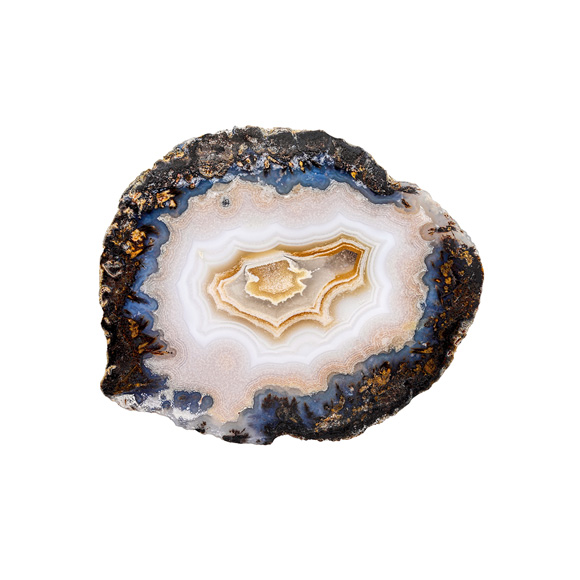
AGATE • Named by the Greek philosopher and naturalist, Theophrastus (named after the river “Achates” where found). Agate is a member of the Chalcedony family. Agates are known by their bands (not always just by the bands, some agates are not in bands at all – agates also have a transparent quality to them) of color ranging from subtle neutrals to bright pinks, oranges, blues, and greens. This banding is caused by layers of silica filling voids in volcanic cavities that are previously filled with air or fluid. Layers like this form in stages with some new layers mixing with various minerals to create alternating colors.
Folklore: Agates have a lower intensity and vibrate to a slower frequency than other stones, however it is highly regarded for stabilizing and strengthening. Agates play a key role in balancing emotional, physical, and intellectual energy. Agates are known as the stone of protection and were often used during Victorian times in jewelry gifted to daughters as they left home to be married as a protective talisman.

BOULDER OPAL • Boulder Opal is well known as the famous opal specialty from Queensland, Australia. The boulder opal fields in Western Queensland are located in a 300 x 1000km long belt of weathered Cretaceous sediments of the Winton Formation. With luck and perseverance you will find Opal in its iron bearing host rock, known as Boulders, these rocks vary in size from a few centimeters up to several meters. Millions of years ago, the opal formed in between the matrix in a rainbow of colors and shapes, filling the natural cavities in the rock. These opals exhibit striking contrasts of color and an intense play-of-color that is unique in the world of precious stones; like fireworks.
Folklore: It is said Boulder Opals will give you emotional balance and security.
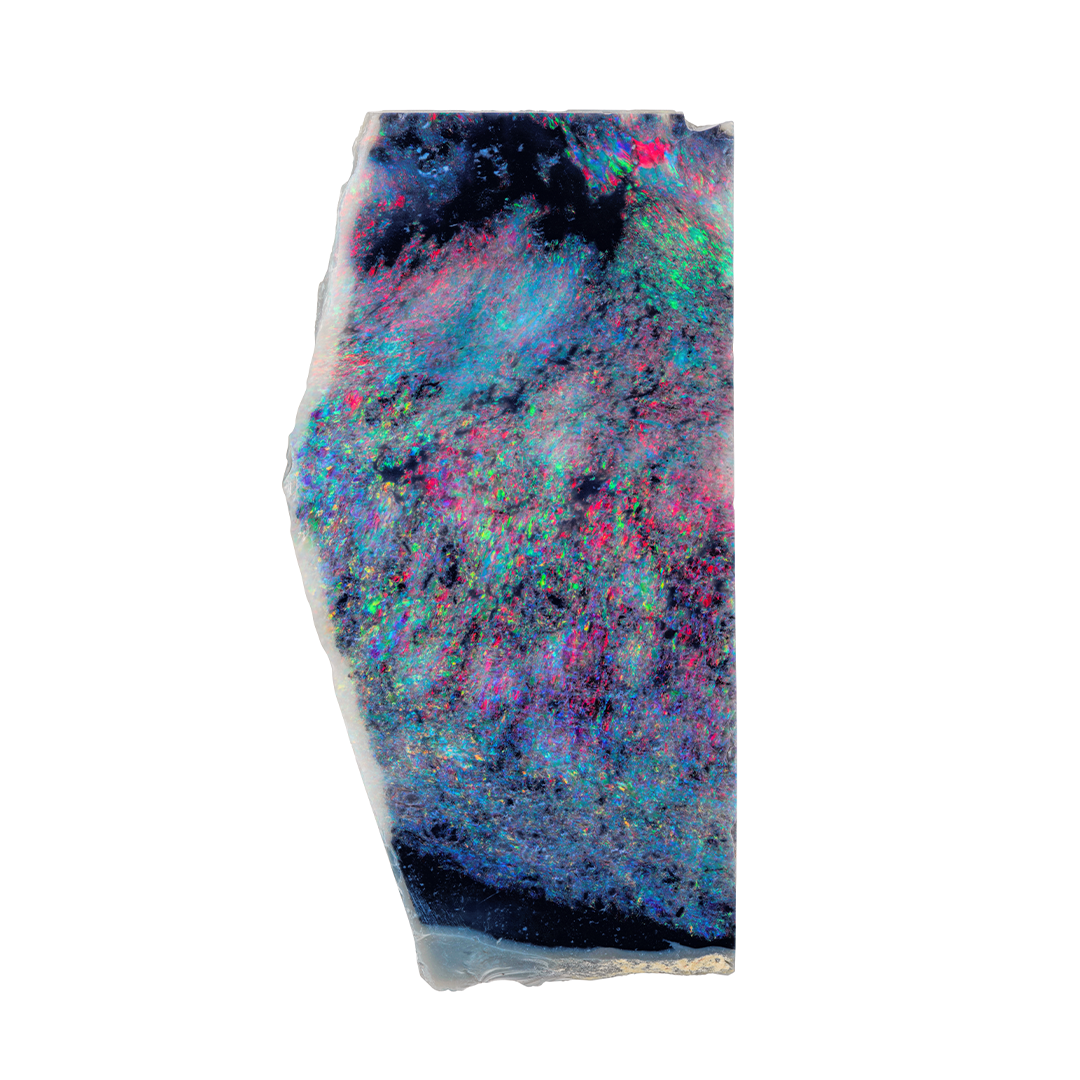
BLACK OPAL • Black opals are regarded not only as the undisputed kings of the opal world - but also as royalty in the world of gemstones. The dark, sometimes deep black body color provides an excellent contrast to the brilliant play-of-color embedded in the dark interior and emphasizes its intensity. The body of Black Opal can range from dark grey to jet black. Black Opals with a specific pattern (e.g. Harlequin) belong to the most expensive gemstones in the world. Studies have shown that Black Opal of average quality and size is rarer than an average one carat diamond. Mined in Lightning Ridge, New South Wales, Australia.
Folklore: Black Opals are said to enhance creativity.
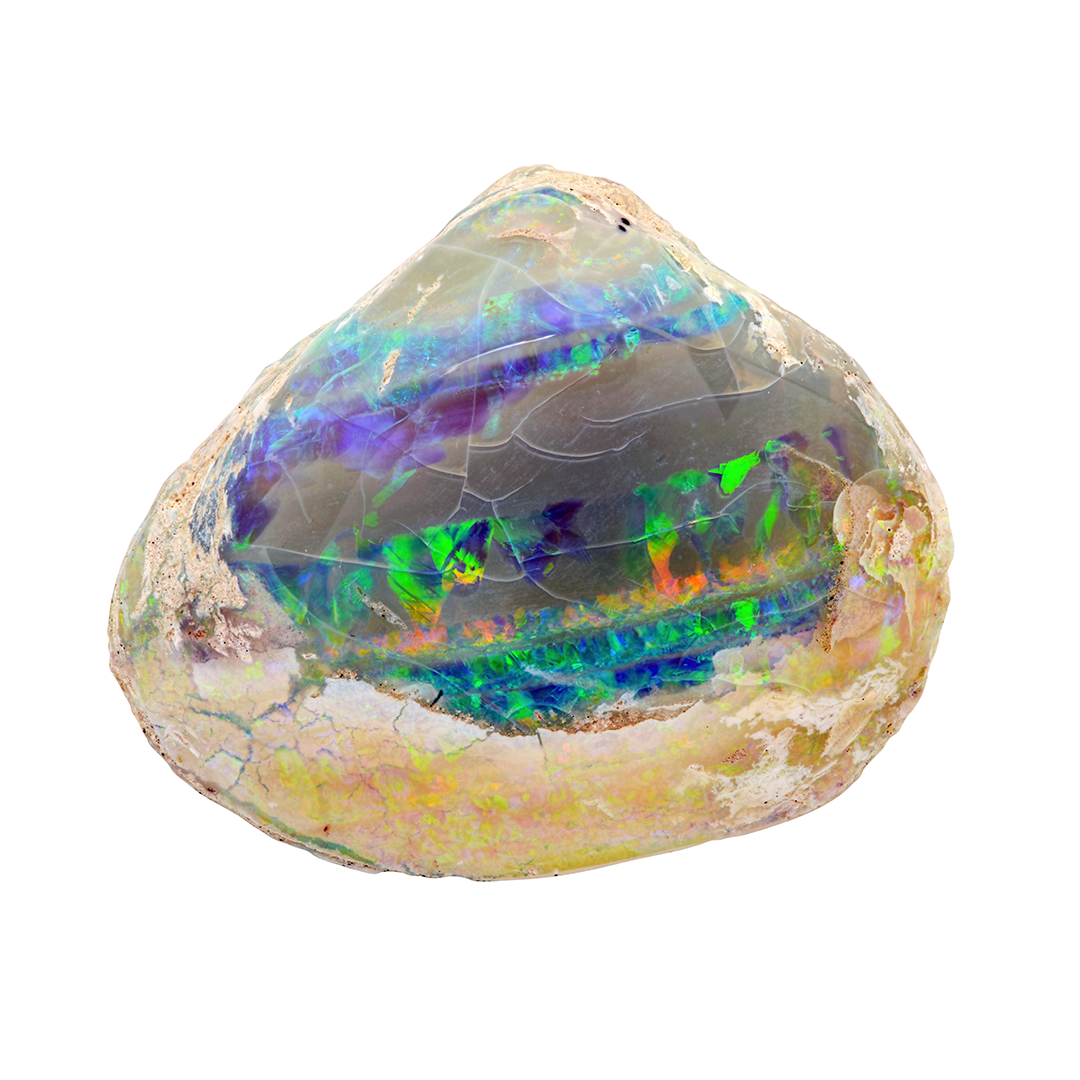
CRYSTAL OPAL • Crystal Opals vary from translucent material with moderate play-of-color through to the finest quality showcasing every color of the rainbow, intensely. The finest Crystal Opals are rare and can be extremely valuable. The term “Crystal” refers to the clarity of the opals and not to their structure. These opals have the most plentiful deposits worldwide; mined in South Australia, New South Wales, Australia, and the area of Pedro Segundo, Brazil.
Folklore: Cyrstal Opals enkindle optimism and allow for the release of love and passion.

FIRE OPAL • Fire Opals are found in cavities and cracks of volcanic deposits. The unique color and brilliance are due to traces of iron oxide. This is the only gemstone which displays the rare orange color in all its shades from yellow to red. Mined in Magdalena, Mexico.
Folklore: It is said that Fire Opals convey courage, strength of will and endurance to the person wearing them.
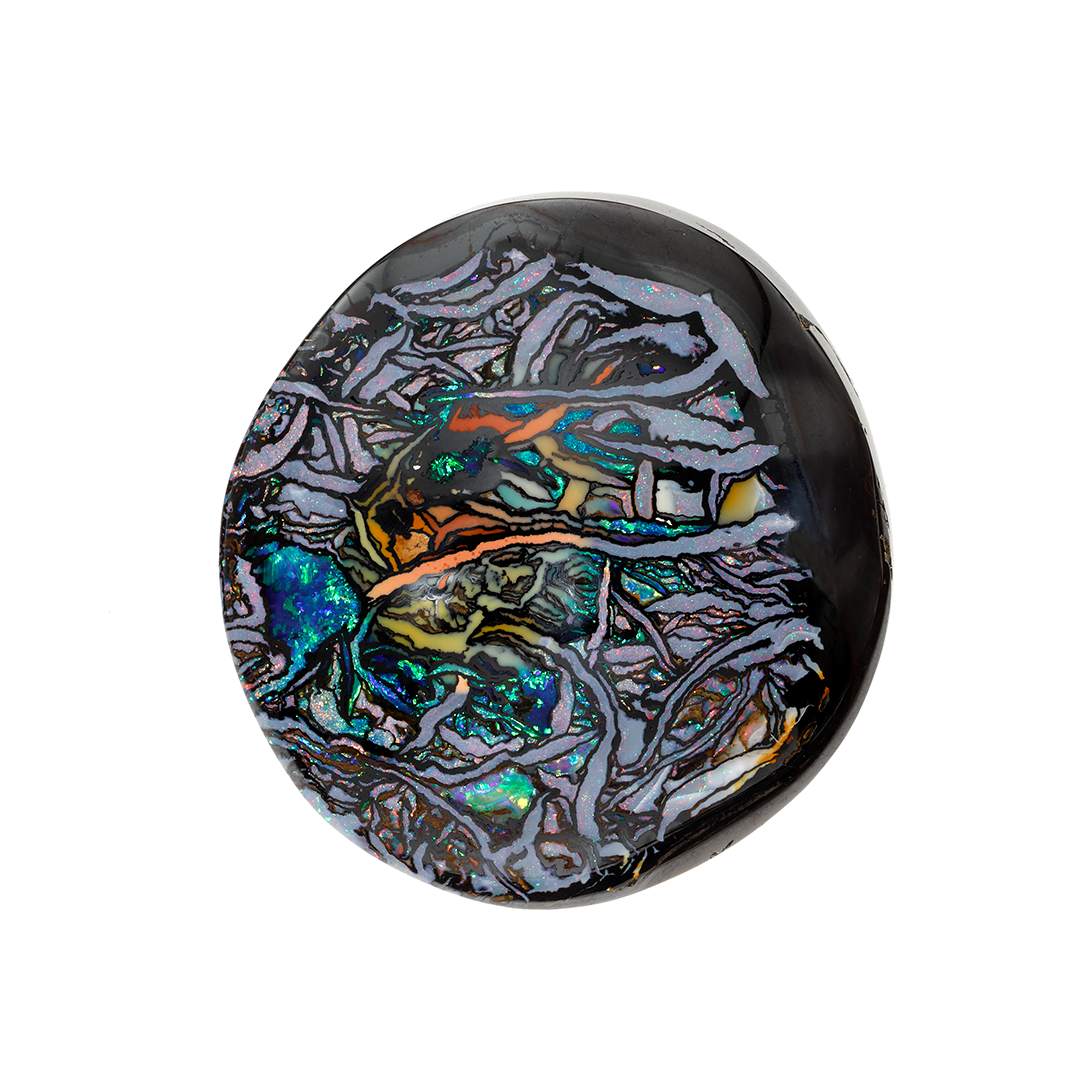
YOWAH/KOROIT OPAL • Yowah-Nut Opals are found in Yowah and Koroit in in Queensland, Australia, mostly in shapes which look like nuts – hence, the name. Yowah Opals can range in size from a hazelnut to a "nut" the size of a fist. Both fields are famous for wonderful pictures stones with fascinating patterns and drawings. These natural designs were formed millions of years ago when liquid gel, silica dioxide mixed with water, flowed into the cracks and fissures of the surrounding rocks. Opals are a true mystery, as they occur in arid regions but are made up of tiny silica spheres arranged in an orderly pattern. This diffracts light entering the stone and causes "play of color" (more play of color equals higher quality opal). Yet silica is typically comprised of 3%-21% by weight of water.
Folklore: These fascinating opals stimulate the imagination and creative spirit, convey empathy, serenity and joy of life.

EMERALD • The word Emerald comes from ancient the Greek word ‘Smaragdus’ for "green gem". Emeralds are a type of beryl and get their green color from trace amounts of chromium, vanadium and iron. These stones have been mined all over the world including Egypt, India, and Austria. But Columbian Emeralds are by far the most notable and sought after, with Zambia being the second mediumst producer of this stone. Emerald has been of reverence in many cultures and was sold in the markets of Babylon as early as 4,000 B.C.
Folklore: Legends endowed the wearer with the ability to foresee the future when emerald was placed under the tongue, as well as to reveal truth and be protected against evil spells. Emerald was once also believed to cure diseases like cholera and malaria. Wearing an emerald was believed to reveal the truth or falseness of a lover’s oath as well as make one an eloquent speaker.

DRUZE • Druze is a collection of tiny Quartz micro-crystals that form on the surface of another stone or mineral. The formation is similar in format to a moss that grows over the base material. This occurs when water brings minerals onto the host rock's surface. When the water evaporates, cooling occurs leaving tiny mineral deposits that form microcrystalline structures.
Folklore: As Quartz is the great conductor of energy, Druze will then simply amplify the energy of the host stone, whatever it may be.
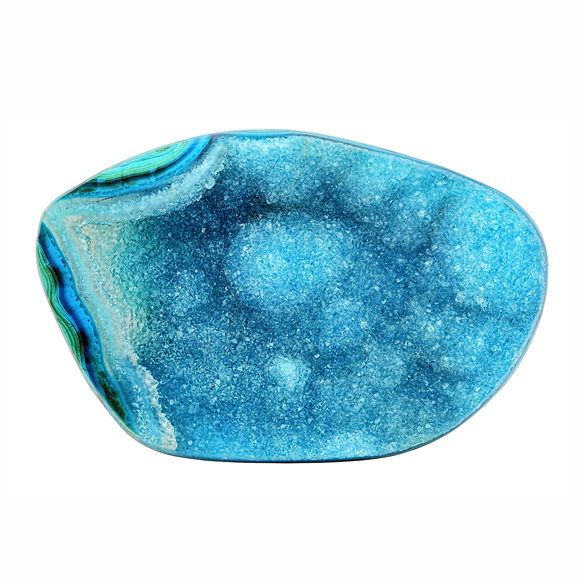
CHRYSOCOLLA DRUZE • Chrysocolla is made up of hydrated Copper Silicate. The coloration ranges from pale green to deep blue and is often found with Malachite and occasionally with Azurite.
Folklore: Chrysocolla is a stone of empowerment and expression. The soothing blue-green material is said to improve intuition Chrysocolla Druze therefore possesses these traits but is amplified by the Quartz micro-crystals on the surface.
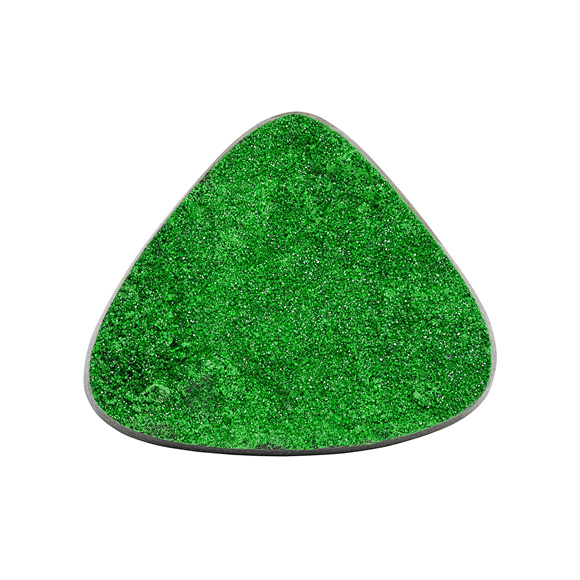
UVAROVITE GARNET • Uvarovite Garnet is a chromium-bearing garnet species discovered in the 1800s and was named for a Russian count who was also known to collect minerals. It is one of the rarest forms of garnet and is most prevalent in Russia, Canada, and Spain, though some pockets have been found in Finland, Norway, and South Africa. Often found in Druze form where the sparkling green emerald-color micro-crystals have grown onto the surface of a rock.
Folklore: This crystal promotes prosperity and wealth, encouraging the recipient to appreciate what is given to them by the universe.

COBALTO CALCITE • Cobalto Calcite, sometimes referred to as pink dolomite, was discovered in Congo (Zaire), Africa. This stone is a modern-day discovery and because of the political situation within the country, the material is not at this time being actively mined.
Folklore: This healing stone encourages one to overcome feelings of lack of self-worth and symbolizes tolerance, compassion and forgiveness. The Cobalto Calcite relieves the body of stress, tension, and anxiety.
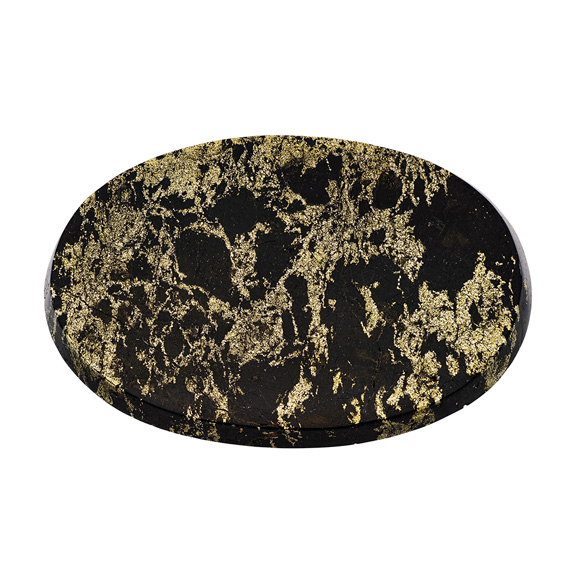
APACHE GOLD • Mined in Jerome, Arizona, Apache Gold is a combination of Chalcopyrite in a black Chlorite Schist.
Folklore: It is an excellent grounding and protecting stone that aids in the alignment of energies. Apache gold protects against negativity energy and is said to ground the wearer.

JASPER • Jasper, a form of opaque chalcedony which typically comes in shades of red, yellow, brown, green, and sometimes blue. The smooth-surfaced mineral, whose name is derived from the Greek word for "spotted" or "speckled", comes in many varieties. Some of the most recognizable include Ocean Jasper, Dalmatian Jasper, and Picture Jasper.
Folklore: Historically, Jasper is traceable to all ancient civilizations and has also been called the “supreme nurturer”, rightfully so as it is a stone of grounding, stability, comfort, and security.

QUARTZ • Quartz is the second most abundant mineral in the Earth's crust (second only to Feldspar). The word Quartz is derived from a German word that roughly means "hard". Quartz Crystals are much more than 'rocks' they are alive and conscious. If you look at the periodic table, carbon is the sixth element, which is associated with organic chemistry and in general that which is 'live', however one octave below is the element Silicon, (the primary element of Quartz Crystal) which comprises 80% of the Earth's crust. In the 1950s, it was discovered that silicon and carbon displayed the exact same principals of life. For example, life forms deep within the ocean are alive, conscious, and reproductive and they are made of 100% silicon with not a bit of carbon. Varieties of quartz include but are not limited to Phantom Quartz, Rutilated Quartz and Rose Quartz.
Quartz Crystals are aware of more than humans typically acknowledge. Marcel Vogel, world renowned scientist who holds over 200 patents (including one for the floppy disc) discovered that crystals are able to receive and send both human thoughts and emotions. If you realize that the first radio in the world was a "crystal set" this will make sense to you. One would simply place a Quartz Crystal on a table, touch a wire to the crystal, and you could hear the radio signal emote sound through a speaker. This is because the crystal was picking up electromagnetic signals in the radio band of frequencies. Human thoughts and emotions are also found in the electromagnetic range of frequencies. Although thoughts have very long wavelengths compared to radio waves, but with this exception they are exactly the same. This is why we call Quartz the Conductor.
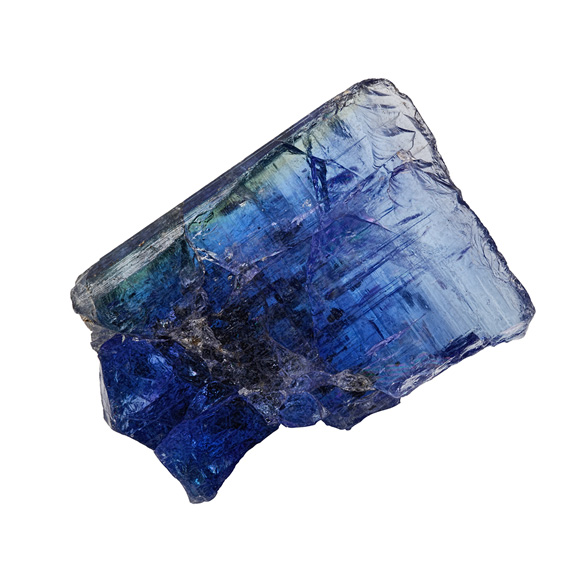
TANZANITE • Found in 1967 and named after the East African State of Tanzania, the only place in the world where it has been found. The Tanzanite gemstone is a blue variety of Zoisite. Naturally forming tanzanite is extremely rare because of the chemical element of vanadium which gives the tanzanite’s its blue violet color and is still only found in the region of the Merelani Hills, near Mount Kilimanjaro. This discovery is widely attributed to geologist Manuel D’Souza who was led to these gemstones by a Maasai Tribesmen, Ali Juuyawatu.
Folklore: The Maasai believe that tanzanite is the stone of birth, and for this reason they frequently gift their wives with Tanzanite gemstones following the birth of their first child. Tanzanite is also known as the stone of magic, facilitating spiritual awareness and stimulating insight. The gemstone is also sometimes called the “working man’s stone” due to the fact that the stone will help an individual slow thing down.
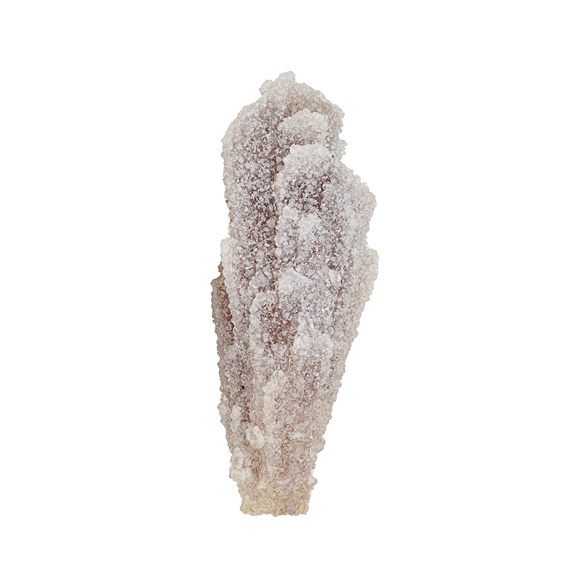
STALACTITE • The name of the stone originates from the Greek word stalasso, “to drip.” This is a formation that hangs from the ceilings of caves, hot springs, and even man-made structures. These massive formations begin with one drop of mineral-rich water.
Folklore: Stalactite is associated with hidden inner growth, secret expansion of the higher self.
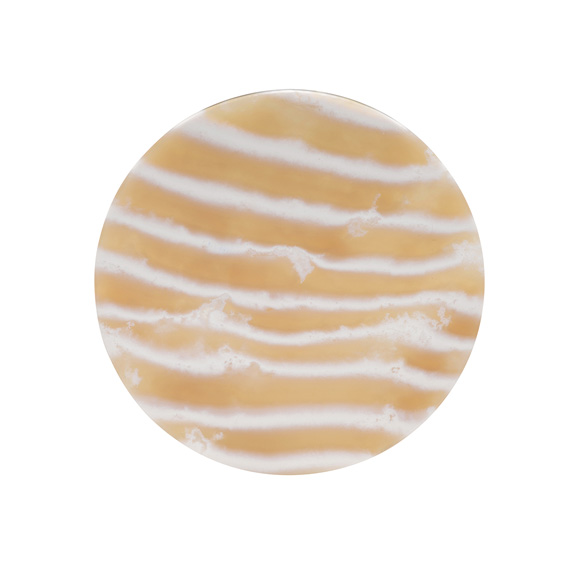
CHALCEDONY • Chalcedony is a cryptocrystalline form of silica, composed of very fine intergrowths of the minerals quartz and moganite. The name chalcedony comes from the ancient Greek town Chalkedon in Asia Minor and comes in many varieties such as; agate, aventurine, carnelian, chrysoprase, heliotrope, moss agate, mtorolite, onyx. As early as the Bronze Age chalcedony was used in the Mediterranean region at the Palace of Knossos, chalcedony seals having been recovered as early as 1800 B.C. The Romans prized chalcedony as seals, and the Victorians carved them into an endless array of cameos and intaglios.
Folklore: Chalcedony was used in Renaissance magic for health and safety. Chalcedony is used to absorb negative energy and transfer positive. Further, it is known to encourage and enhance the feeling of brotherhood and goodwill and increases the qualities of generosity and benevolence in humans.